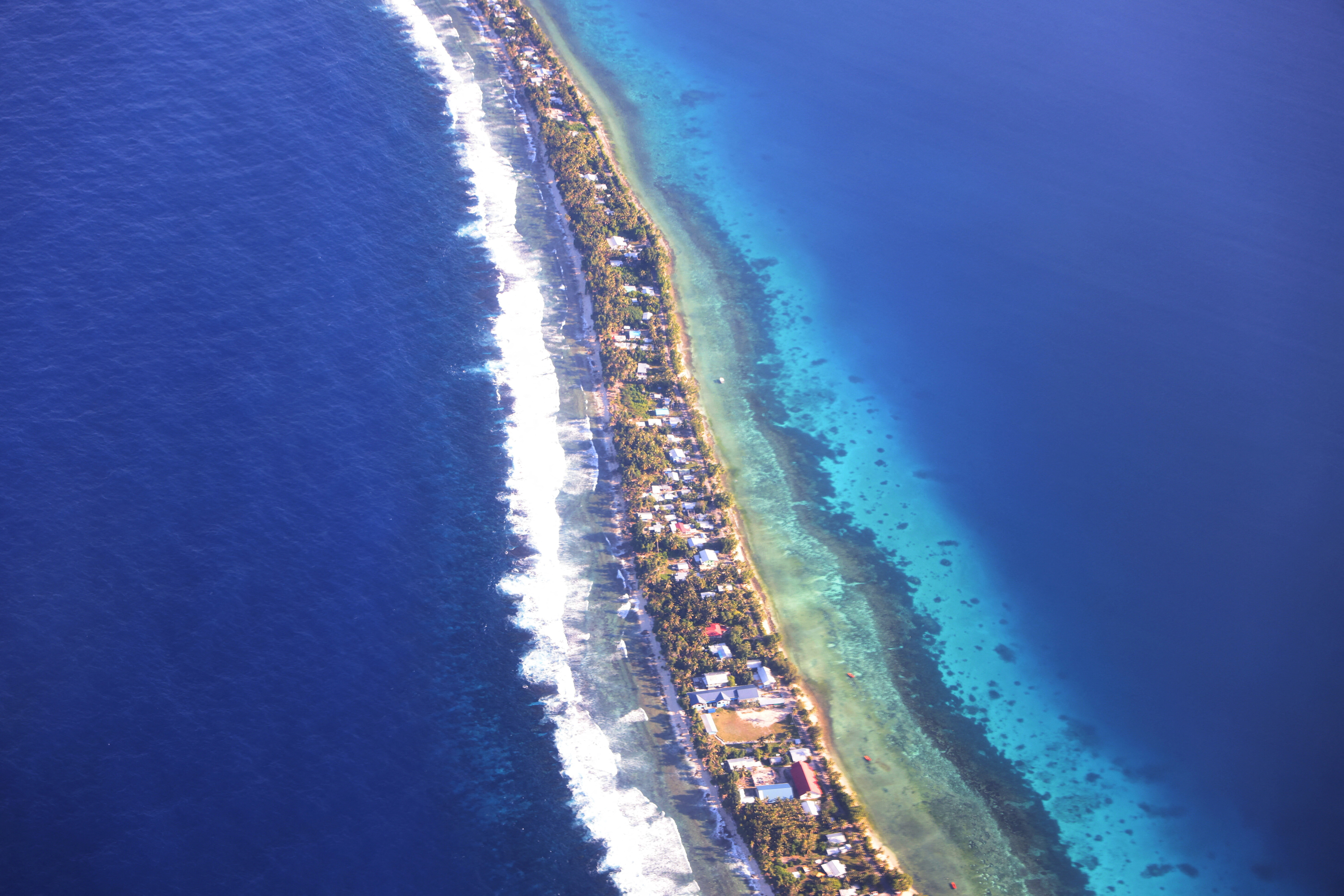The world’s largest floating office has just launched - is this the answer to our flood-prone future?

By 2050, more than 570 cities will be exposed to the risk of rising sea levels, according to the C40 network of global cities collectively addressing climate change.
Image: Plomp
Stay up to date:
Restoring ocean life
- Climate change is causing sea levels to rise, threatening low-lying cities around the world.
- Sustainably designed buildings that float on water may be the answer for at-risk waterside communities.
- Rotterdam has just launched the world’s largest floating office.
- While the Maldives is building a low-rise city that floats on a flexible urban grid.
- The World Economic Forum is campaigning for governments, businesses and communities to take urgent action to tackle climate change.
In a Dutch port more used to cargo ships and cranes, the world’s largest floating office has just settled into the harbour.
The carbon-neutral Floating Office Rotterdam (FOR) is created for a future in which rising sea levels caused by climate change are expected to bring more frequent and severe floods.
Opened in September by King Willem-Alexander of the Netherlands, the three-storey structure offers a glimpse into how the world might live with the effects of climate change.
How does it work?
FOR’s pontoons provide a stable floating foundation that enables the structure to move as water levels rise and fall. Renewable energy is drawn from huge solar panels above and beneath the water. A plant-filled roof leads to overhanging balconies that cool the interior and construction materials were chosen because they can be easily recycled when the building is no longer needed.
The project is supported by former United Nations Secretary-General Ban Ki-moon – whose non-governmental organization, the Global Center on Adaptation, is located there – as well as International Monetary Fund Managing Director Kristalina Georgieva.
Gathering storm clouds
FOR is one of a number of buildings that have been redesigned to exist on the water in anticipation of rising sea levels, floods and land loss. This is forecast to badly affect millions of people in the near-future unless global warming can be kept to the Paris Agreement level of below 2°C.
By 2050, more than 570 cities will be exposed to the risk of rising sea levels, according to the C40 network of global cities collectively addressing climate change. It estimates that the economic cost of submerged and storm-ravaged communities could be $1 trillion.
A floating city in the Maldives
Low-lying islands are particularly vulnerable to rising seas and one of the world’s most exposed nations is the Maldives, 80% of which sits less than a metre above sea level.
With this in mind, the archipelago is building a low-rise city that floats on a flexible urban grid. Designed by Netherlands-based Dutch Docklands, the Maldives Floating City (MFC) will be located a 10-minute boat ride from the island capital, Malé.
The city will be made from interlinked sections strung across a 200-hectare lagoon; homes built in the local style will be connected by a network of bridges, canals and docks. A series of barriers aim to weaken the impact of waves while giant new artificial reefs will be grown to act as water breaks. Construction on the site is due to begin in 2022.

Future-proofing
In March, the UN’s World Meteorological Organization warned that the impact of our warming ocean “will be felt for hundreds of years”.
The World Economic Forum is calling for an accelerated effort to reach a net-zero world by 2050 at the latest.
The FOR initiative was designed and constructed with private money, but the Forum’s Climate Action Platform argues that “urgent public-private cooperation” is needed “on a global scale” to successfully tackle the world’s climate challenges.
Even if global warming is kept within the Paris Agreement targets, some environmental damage will remain unfixable, with floods and heavy rains still likely in some parts of the world. Floating structures can help such at-risk communities prepare for rising water levels.
What's the World Economic Forum doing about the ocean?
Accept our marketing cookies to access this content.
These cookies are currently disabled in your browser.
Don't miss any update on this topic
Create a free account and access your personalized content collection with our latest publications and analyses.
License and Republishing
World Economic Forum articles may be republished in accordance with the Creative Commons Attribution-NonCommercial-NoDerivatives 4.0 International Public License, and in accordance with our Terms of Use.
The views expressed in this article are those of the author alone and not the World Economic Forum.
Related topics:
Forum Stories newsletter
Bringing you weekly curated insights and analysis on the global issues that matter.
More on Climate Action and Waste Reduction See all
Marco Lambertini and Marcelo Bicalho Behar
November 6, 2025
Lasse Bruun
November 6, 2025
Tom Crowfoot
November 5, 2025







